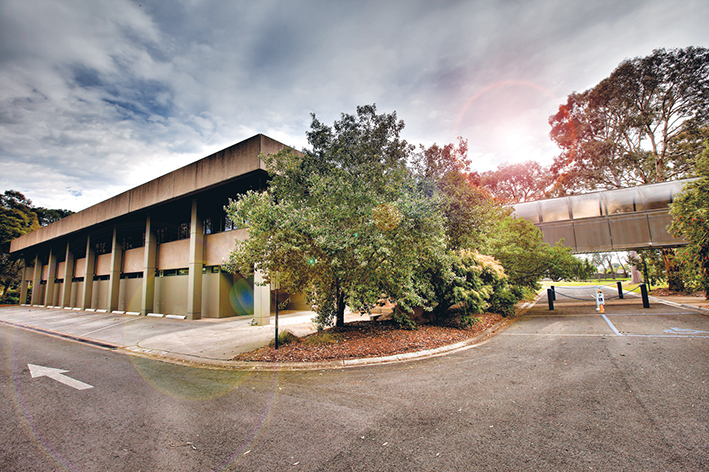MORNINGTON Peninsula Shire Council has adopted the Tyabb Airfield Precinct Plan which came about as part of the need to address what officers say was the “ongoing uncertainty in the community regarding future plans for the airfield and concerns relating to potential loss of amenity, particularly from increasing aircraft noise”.
The precinct plan was identified in the Tyabb Township Plan 2012. It aimed to address concerns of the operators of the airfield regarding future use and development that may compromise its safe operation.
Consultants Arcadis and Trent Kneebush were selected on the basis of their “significant experience in aviation and land use planning”, according to a precede in the shire’s strategic planning report.
In developing the draft plan, community meetings were held in Tyabb and discussions held with key groups. Invitations to provide comments were sent to more than 2000 landowners, residents and businesses.
Strategic projects manager Allan Cowley said the draft plan was advertised, with a submission period mid-August to the end of September, and included two community briefing sessions with more than 50 attendees. Over 140 submissions were received.
The consultants recommend establishing a Community Reference Group (CRG) to advise council and provide a forum to ease recommendations of the TAPP, to establish a complaint response-and-review process, and to prepare an airfield noise management plan.
While there is “concern … that a consultative approach has been tried and failed before … more is at stake for all parties and this may encourage participation”, officers said.
The consultants supported the widening of the main sealed runway to 18 metres to improve pilot safety in adverse weather. An aircraft noise management plan is recommended to manage noise over residential areas.
Many submissions were for and against the airfield. Some opposed any limitations on its operations, while others said the Tyabb Airfield Precinct Plan (the plan) did not adequately restrict the airfield’s operations.
The first group praised the airfield’s economic and social contribution in terms of jobs, the ability to fly, training, tourism, charitable contributions, such as the biennial Air Show, and support for emergency services.
The group opposed restrictions on airfield use and development, such as the proposal to establish buffer areas to the west of the main runway, or on land in the Special Use Zone.
Supporters of the airfield argue against restrictions on the use of land bought by Peninsula Aero Club members adjacent to the airfield.
The consultants said a substantial group, including a petition with 157 signatures, accepted the airfield at its current level and development, but was opposed to any further expansion due, primarily, to concerns about increasing noise and other emissions.
Others argued that the airfield already results in “unreasonable impacts on the amenity and safety” of the community, and that there either “needs to be much stricter controls or the airfield should be relocated”.
The plan report notes the “significant difficulties in applying new conditions to existing uses and the practical barriers to monitoring and enforcement”.
“Although the airfield can legally rely on the existing planning approvals, all ongoing land uses to some degree depend on a ‘social license to operate’ and cannot expect to operate outside reasonable limits. In this context, it is in the interests of all parties to cooperate,” the consultants said.
The operation of the airfield, and the conflicting expectations that surround it, mean that it is unrealistic to expect that the precinct plan “could provide a quick fix or complete resolution to some long-standing issues”, the consultants said.
The proposed Airfield master plan is a high priority in the revised precinct plan, which is expected to be referred to council for consideration and endorsement.
“This resolution … confirms a policy of support for the existing operation of the airfield, with the option for limited additional development provided it can be justified within the context of a Fly Neighbourly Agreement,” Mr Cowley said.
It specified that hangers would not be supported on land adjacent to the special use zone unless they were part of a house and that any alterations to the runway would be subject to a full public planning process.
The consultants said the airfield master plan “should assist in resolving the uncertainty which exists in relation to what actually occurs at the Tyabb Airfield now and what is planned for the future”.
A recent VCAT decision on an aircraft hangar on land adjoining the airfield is significant. The decision, contrary to a previous VCAT determination, found that a shed used to store aircraft owned by the resident for domestic use may not require a planning permit. This means that the ‘one hanger/two aircraft rule’ proposed for land on the western side of Stuart Rd would not apply.
Controversial changes to the threshold of the north/south runway, which many opponents see as an unwanted intrusion, is intended to enable aircraft to take off and land higher from over Mornington-Tyabb Rd and areas to the north, the consultants said.
This matter will be further investigated in the Airfield Master Plan.
Mr Cowley said “real progress will depend on how much agreement can be achieved through the CRG process and the development of the AMP and noise management plan”.
Implementation of many of the plan’s actions will need to go through a planning scheme amendment process, and be exhibited and reviewed. “This … should provide an assurance for all parties that the merits of any future changes will be thoroughly and transparently assessed.”
Mr Cowley said the plan sought to address a “complicated situation and may not meet expectations of there being a simple regulatory solution in one form or another”.
It is “essentially dependent on a process of ongoing consultation and reasonable co-operation, and this is always open to an uncertain outcome”.
The officers said the actions and strategies outlined in the plan “provide a way forward in response to many of the key issues”.


